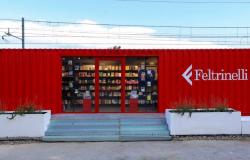«Florence by bike» is the new book by Mauro Bonciani published by Le Lettere with a presentation by Paolo Ciampi: a guide to rediscover avenues, parks, monuments, landscapes from another point of view. Ten itineraries in the city and five in the surrounding areas. We publish the chapter on Pian dei Giullari and the green hills: you go up, you go down, you struggle. But it is full of history and beauty.
Up and down the Florentine hills again. Because the city is not just its historic center, a “manifesto” of Humanism and the Renaissance, with a unique concentration in the world of palaces, museums, masterpieces, churches and squares. The objective this time is Pian dei Giullari and Bellosguardo, for about ten kilometres, far from mass tourism and the usual destinations, in places rich in history and stories, among green hills…
Starting point is Piazza Bartali, the great cycling champion born in Ponte a Ema, a Florentine village not far from the square that bears his name and which is located in the Gavinana district. Next to the square, in the square dark gray building in viale Giannotti 85, is the Italian Auschwitz Memorial, set up in the extermination camp in the 1970s by the will of the National Association of former war deportees and re-set up in Florence in recent years; in the center of the square there is the monument to Gino Bartali, with a useful fountain nearby. From there you go to the nearby Via del Paradiso – after just a few meters you are far from the chaos of the city – and then turn right into Via Benedetto Fortini, narrow between walls and fields, which you continue until the crossroads, on the left, with via Santa Margherita a Montici, easily recognizable because it is an uphill road that begins in a curve.
Via di Santa Margherita a Montici climbs, first gradually, then with more significant slopes, along the entire hill, with at the beginning a spectacular view of the hills and the plain from which Brunelleschi’s Dome and Giotto’s Bell Tower “emerge” and then straight sections and others curved between villas, fields, the sound of birds singing or the bells of San Miniato al Monte ringing, olive trees, cypresses. The last stretch is narrow and very steep — you can even get off the pedals, no shame — and leads to the thousand-year-old church of Santa Margherita a Montici, born from a fortress-tower that dominated the valley from the top of the Montici hill, and which has a single nave.
Here the surrender of the Florentine Republic to the Medici was signed on 12 August 1530, which put an end to the siege of Florence in 1529 and 1530 and avoided the sacking of the city by the imperial troops sent by the pontiff of the Medici house, Clement VII, Giulio de ‘ Doctors. From via Santa Margherita continue along via del Pian dei Giullari, downhill, with a magnificent view of Florence on the righta road that leads to Pian dei Giullari, from which you can see the astronomical observatory of Arcetri and at the bottom of the valley, on the left, the Certosa del Galluzzo, but also the fake medieval Gallo tower, built by the famous, very rich and controversial for his unscrupulous antiquarianism Stefano Bardini, who gave his name to the museum of the same name which is located on the banks of the Arno and which preserves his legacy.
In via del Pian dei Giullari, at number 42, there is Villa il Gioiello, where Galileo Galilei lived as a recluse after being condemned by the Holy Inquisition in 1633 as a heretic, for having supported Copernican theories, with the Earth revolving around the Sun, and where he died. The Villa which has an elegant loggia overlooking the garden where Galileo loved to walk and which also had some rows of grapes, now restored on the external walls, is characterized by a bust of Galileo and is part of the museum system of the University of Florence. The building can be visited by reservation and hosts a suggestive exhibition with the reconstruction, including furnishings, of some rooms: the great scientist’s study, the kitchen and the cellar, intact since Galileo’s time but which were without furniture.
A little further on is the headquarters of the Spadolini Foundation, with its book heritage, and the singular Villa Nunes Vais, with its façade painted with crossed white, red and blue lozenges, and after the Arcetri hill, the road ends in via Viviani , to follow up to via S. Leonardo, turning left, to arrive at the square and the Villa del Poggio Imperiale, from which you “start again” towards another suggestive hill, as its name suggests: Bellosguardo. To get there you cycle along Viale del Poggio Imperiale, downhill to Porta Romana and from here you take the shady Viale Petrarca, being careful of cars, because there is indeed a cycle lane on the right side of the road, but it is often blocked by parked cars or by those maneuvering to park, up to Piazza Tasso, with its garden. From Piazza Tasso, at the traffic lights turn left, into Via Villani, which goes up to Piazza San Francesco di Paola, from which the beautiful Via di Bellosguardo starts, surrounded by greenery, which goes up to Prato dello Strozzino…
In the square of Bellosguardo there is also the Saracino well, which takes its name from the puppet of a Saracen who was used for jousting, as is still used in Arezzo, in the famous Giostra del Saracino. Going back here is via di San Carlo, where the ancient castle of Montauto is located, which descending from the hills leads to Soffiano, in the street of the same name which must be followed until via Pisana, where you cycle up to Piazza Pier Vettori (just before, on the left, there is the park and Villa Strozzi, worth seeing). From here, we continue for the last stage in the history and views of the city: not far away is the church of San Bartolomeo in Monte Oliveto. From Piazza Pier Vettori, turn right to take Viale Sanzio and at its beginning, on the right, there is the steep Via di Monte Oliveto.
At the top of the road there is the convent and the church of Monte Oliveto, (check the opening times and days before going) the church in which Leonardo da Vinci’s Annunciation was located, transferred to the Uffizi in the mid-nineteenth century, and which keep aLast Supper of Sodoma and important paintings by the mannerists. With eyes full of beauty, we go back to Piazza Pier Vettoriwhere you continue along via del Ponte Sospeso and piazza Gaddi, over the Arno and Ponte alla Vittoria, where the route ends.




